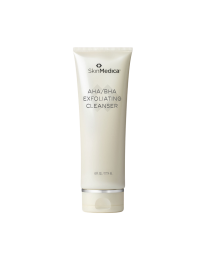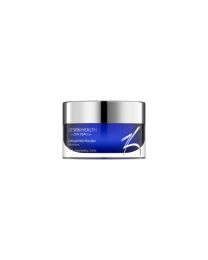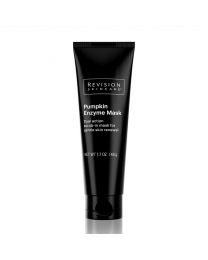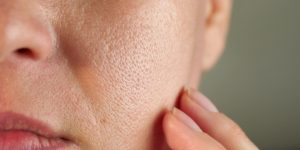Free Shipping Over $100
Free Samples With Every Purchase
Auto Replenishment Available
Authorized Reseller
The Ideal Exfoliation Routine: How Often Should You Exfoliate?
Exfoliation involves using skincare products or physical devices to remove dead skin cells, revealing healthy skin below. This is an important part of every skincare routine as it promotes an even skin tone and texture. Exfoliation can also help reduce the appearance of fine lines and wrinkles for smoother, more youthful-looking skin. In this blog, we’ll review just what exfoliation is, how to exfoliate well, and review some of the top-recommended exfoliation products from dermatologists.
Understanding Exfoliation
Skin naturally sheds dead skin cells, but as we age, skin cell turnover slows. Additionally, people who have oily skin may not shed dead skin cells as readily. When dead skin cells aren’t removed regularly, they can be trapped inside the pores causing the formation of blemishes. When dead skin cells remain on the surface of the skin, they may also create an uneven appearance to the skin’s tone and texture, contributing to the appearance of fine lines and wrinkles. A good exfoliation routine not only improves the appearance of skin, but it can also keep skin healthier. By uncovering the new skin cells, exfoliation reveals a healthier layer of skin. Exfoliation also improves the skin’s ability to absorb other skincare products by keeping the pores clear and open to absorb the active ingredients. Finally, the act of exfoliation also increases blood circulation and collagen production for more youthful-looking skin.
How Often Should You Exfoliate?
There is not a single answer to the question of how often you should exfoliate. Instead, the answer depends on the individual’s skin type and a number of other factors. It’s always best to consult with a dermatologist to receive professional guidance, but some basic recommendations for exfoliation frequency by skin type are listed below:
- Balanced (normal) skin – use a chemical or physical exfoliant two to three times a week as tolerated.
- Oily skin – use a chemical or physical exfoliant at least three times a week.
- Dry skin – use a chemical exfoliant two times a week.
- Sensitive skin – use a chemical exfoliant once a week and no more than twice a week.
Types of Exfoliants
Exfoliants are typically described as either physical or chemical. While both types remove dead skin cells on the surface of the skin, they achieve this goal through different means. Physical exfoliants are what most people think of when they hear the word exfoliant. They use an abrasive material to scrub dead skin cells away. Sugar scrubs and pumices are common types of physical exfoliants. Chemical exfoliants use acids to break down dead skin cells and the tissue connecting them to the underlying skin cells. In most cases, physical exfoliants are recommended only for those who have oily or balanced skin. Physical exfoliants may also be recommended for use on parts of the body that have thicker skin like the feet and elbows. Chemical exfoliants are a better option for those who have dry or sensitive skin.
Featured Exfoliating Products
While all exfoliation products should deliver the same result – smooth, healthy skin – the process can differ dramatically. To get you started choosing the right product for your skin health needs, we have provided basic information about some of our top dermatologist-recommended exfoliants below:
- Revision Skincare Pumpkin Enzyme Mask – This exfoliation mask is a unique combination of physical and chemical exfoliation. It provides a more thorough exfoliation than chemical exfoliants alone while avoiding the irritation and other concerns associated with physical exfoliants.
- SkinMedica AHA/BHA Exfoliating Cleanser – This chemical exfoliating cleanser combines alpha and beta hydroxy acids to gently dissolve dead skin cells while brightening and clarifying skin.
- SkinCeuticals Micro-Exfoliating Scrub – This physical exfoliant utilizes micro-exfoliating ingredients to gently scrub away dead skin. Soothing aloe prevents irritation.
- ZO Skin Health Exfoliating Polish – This physical exfoliant uses magnesium oxide crystals to scrub away dead skin cells. It’s highly recommended for those who are dealing with hyperpigmentation (dark spots on skin).
- Skinbetter Science AlphaRet Exfoliating Peel Pads – This innovative exfoliation product uses pre-treated scrub pads saturated with glycolic, lactic, and salicylic acid to dissolve dead skin cells. It then adds in the patented skinbetter Science AlphaRet technology that combines alpha hydroxy acid and retinol. This unique combination of physical and chemical exfoliation soothes and hydrates the skin.
- ZO Skin Health Exfoliating Cleanser – This gel cleanser combines physical and chemical exfoliants with a skin-purifying cleanser for a complete clean and gentle yet effective exfoliation.
Tips for Safe Exfoliation
In addition to finding the right exfoliation product, you should also review the following tips for safe, effective exfoliation:
- Review skincare products – Many skincare products dissolve or remove dead skin cells even if they’re not necessarily branded as an exfoliant. Combining too many of these products increases the risk of irritation or dry skin. Avoid exfoliating in combination with benzoyl peroxide or retinol products.
- Be gentle – Apply chemical or physical exfoliants using gentle circles. If you use exfoliating brushes, pumices, or scrubbers, use light strokes to avoid damaging or irritating skin.
- Don’t exfoliate damaged skin – If you have skin damage like cuts, burns, or other wounds, you may want to avoid applying exfoliants on top of these areas to allow them to heal.
- Don’t exfoliate the skin too often – It’s important to exfoliate frequently enough to remove dead skin cells, avoid clogged pores, and keep skin looking refreshed. However, if the skin is exfoliated too often, it can become inflamed. A good rule of thumb is that physical exfoliation needs to be performed less frequently than chemical exfoliation. Additionally, those with sensitive skin should exfoliate less frequently. If you need help determining a good exfoliation frequency, talk to a dermatologist.
- Stop exfoliating – If you notice dryness, itching, inflammation, redness, burning, or skin irritation, you should forego exfoliation for a time and consult with a dermatologist before resuming your exfoliation routine.
Post-Exfoliation Care
To minimize irritation related to exfoliation, it’s important to apply a good moisturizer to soothe and hydrate the new skin that is revealed as exfoliation removes dead skin cells. Depending on your skin type and skincare needs, exfoliation is usually recommended at night to reduce the risk of sunburn. Because new skin is more likely to be damaged by sun exposure, it’s important to apply sunscreen the next morning. If you choose to exfoliate during the day, apply sunscreen and minimize sun exposure.
Don’t Skip Exfoliation – But Choose the Right Products
Exfoliation sometimes gets a bad reputation, especially for people with sensitive skin, but we should all exfoliate regularly. However, it’s important to find the right exfoliation product and use it properly to remove dead skin and promote skin health. It can be tempting to skip exfoliation if you’ve had a bad response to these products in the past, but using the right exfoliant for your skin type and maintaining a consistent exfoliation routine will improve your skin health and appearance.
Keep Learning More to Boost Your Skincare Routine
Ready to enhance your skin's health with the right exfoliation product? Explore the range of products available at Derm Skincare to find your perfect match for a glowing complexion. Interested in hearing more skincare tips and tricks? Don’t forget to visit our blog regularly for recommendations from our trusted dermatologists.













